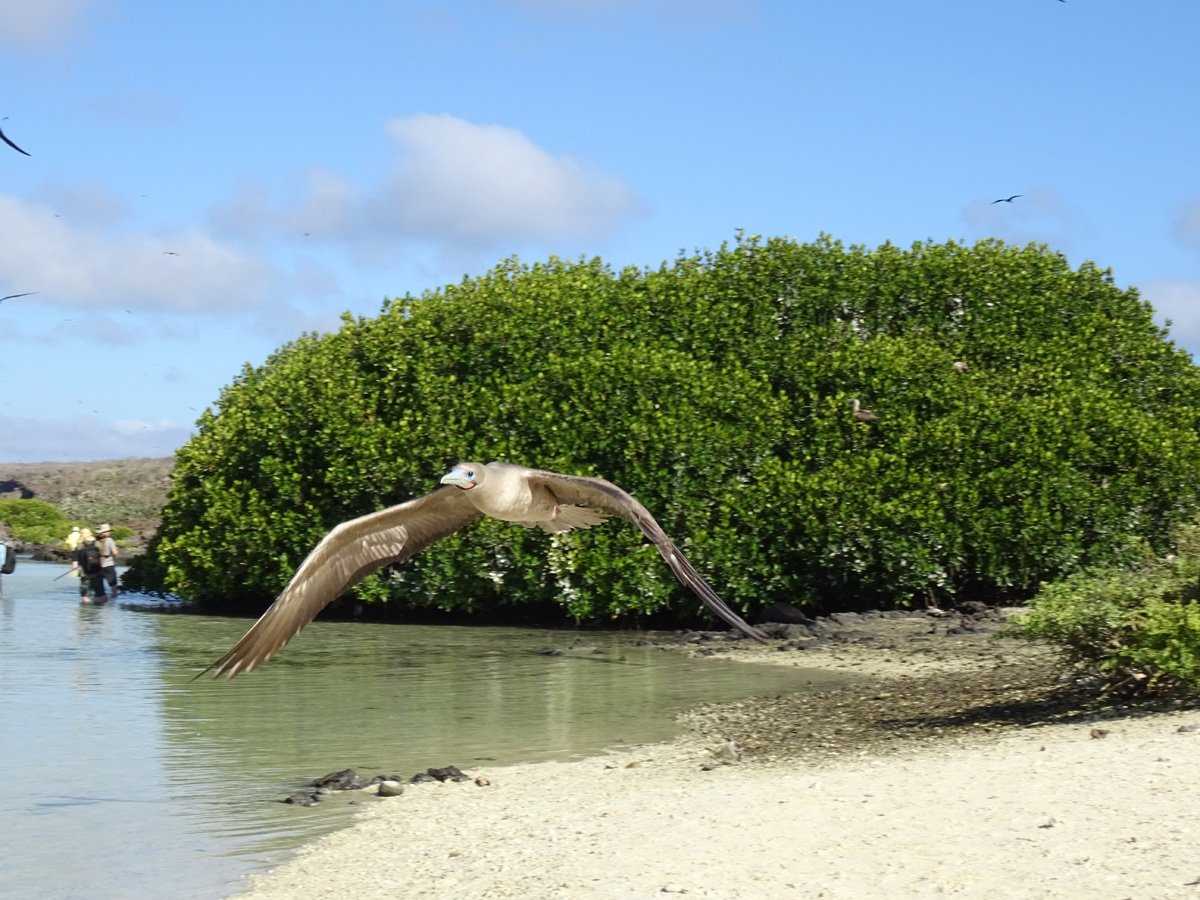In the early hours of the day we arrived to Genovesa Island, located in the northeastern realm of the archipelago. This is an island well known for the large colonies of red-footed boobies, great frigate birds, Nazca boobies and swallow-tailed gulls.
After breakfast everybody went ashore to walk amongst the different colonies. As we ventured further into the island, there were still some males great frigate birds with their bright red pouches inflated, trying to attract the females that were flying above them. The mating season for great frigate birds is about to end this month, and while walking we spotted several adults who already had their small chicks on the nests.
During the morning as well as in the afternoon we looked for short eared owls; this species of bird is the top predator on this island. In the absence of the Galapagos hawk on this island, the short-eared owl has adapted to hunting during the day time, feeding on primarily on storm petrels as well as small land birds such as finches and Galapagos doves. We were lucky to find several owls quietly hunting on the lava flow.
After our walk, we went snorkeling along the cliffs of Darwin Bay. At this site there were parrotfish, creole fish, damselfish and some of our guests spotted a solitary Galapagos shark. For the guests who wanted to snorkel from the shore, we also offered the option to go to the beach, and there they found stingrays, white tipped reef sharks and several species of fish throughout the shallows.
After such a busy morning, we returned to the National Geographic Endeavour for a well-deserved lunch before heading out again in the afternoon. This time, we had a chance to kayak and explore the coast, and afterwards we went ashore to explore two of the trails trails on Genovesa Island. The scenery was spectacular, and at the end of the afternoon we had a very colorful sunset with hundreds of birds flying all over the caldera. It was a great way to end our unforgettable journey in Galapagos.







